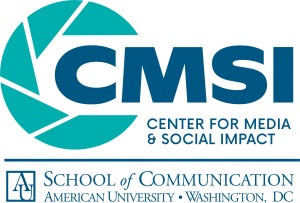- Economic issues are persistent challenges facing today’s documentary professionals. A small proportion of documentary professionals (one quarter) makes a full living from documentary work; 75% do other work to make a living. Only 2 in 10 documentary filmmakers made enough money to cover production costs and make a profit from their most recent film; filmmakers who make a profit on their documentaries are still a rarity, not even close to the majority. Three- quarters (74%) of documentary professionals were negatively financially impacted by the COVID-19 pandemic. BIPOC and women- identifying filmmakers are the most economically disadvantaged in terms of film income, revenue, and access to bigger money that streaming networks can offer.
- Overall, Black, Indigenous and People of Color (BIPOC) documentary professionals and primary makers (directors and producers) are having a different experience in the documentary industry than their white peers. In this study, BIPOC filmmakers attest to the importance of philanthropic foundations and public TV for their funding, film-based revenue, and distribution, They are more likely to make short-form nonfiction stories than white storytellers. BIPOC makers are much less likely than white makers to garner film funding, documentary revenue, and personal income from streaming networks. BIPOC makers are much less likely than white makers to have made any revenue at all from their most recent documentary film; the majority did not receive any revenue.
- Gender is a meaningful differentiator in several financial categories. Women-identifying documentary professionals show some level of economic disparity in the film business. Women makers report needing to rely on sources of film funding that include household income and individual donors much more than men. Male-identifying filmmakers are more likely to be found making documentary income from streaming networks and series than women. Women makers were much less likely than men to have made any revenue at all from their most recent documentary film.
- Documentary multi-part series are big business, and yet, many independent documentary makers still are not seeing the revenue from this work even though they see “commissioned work” from streamers and other networks as the greatest economic opportunity for the future. A small handful of players is making deals for lucrative multi-part documentary series, even though the majority of nonfiction filmmakers are interested in this work.
- Despite the tremendous possibilities of the streaming entertainment age of media, legacy original practices and economics remain important. Documentaries continue to be distributed in a “dual distribution” system, with grassroots community screenings used by the majority of documentary makers to reach audiences alongside commercial and public entertainment networks. In terms of revenue sources for makers, DVD sales and educational distribution (both DVDs and streaming) matter a great deal.
- Documentary storytellers are motivated by a higher purpose beyond simply making entertainment, also a legacy value in nonfiction storytelling. The majority of documentary makers are compelled to tell nonfiction stories to make a meaningful difference in urgent social issues. BIPOC and women filmmakers are the most motivated by the impulse toward positive social impact.
Challenge and Opportunity in Documentary Storytelling
Documentary has long enjoyed a vibrant space in the global media ecology, and the marketplace for creative nonfiction storytelling continues to broaden in the United States and around the world. Despite an expansive landscape for documentary filmmakers and audiences, particular challenges are persistent while opportunities emerge. As viewers continue to discover documentary storytelling across various platforms, and as new makers enter the craft, tracking industry professionals’ perspectives and lived experiences is a vital pursuit. This study stems from these ideas and imperatives.
About The Center for Media & Social Impact
 The Center for Media & Social Impact (CMSI), based at American University’s School of Communication, is a creative innovation lab and research center that creates, studies, and showcases media for equity, social change, and social justice. Focusing on independent, documentary, and entertainment media, the Center bridges boundaries between scholars, producers and communication practitioners across media industries, social justice, public policy, and public engagement. The Center produces resources for the field and academic research; creates original media; convenes conferences and events; and works collaboratively to understand and design media that matter.
The Center for Media & Social Impact (CMSI), based at American University’s School of Communication, is a creative innovation lab and research center that creates, studies, and showcases media for equity, social change, and social justice. Focusing on independent, documentary, and entertainment media, the Center bridges boundaries between scholars, producers and communication practitioners across media industries, social justice, public policy, and public engagement. The Center produces resources for the field and academic research; creates original media; convenes conferences and events; and works collaboratively to understand and design media that matter.
About The International Documentary Association
 The International Documentary Association (IDA) supports the vital work of documentary storytellers and champions a thriving and inclusive documentary culture. IDA provides production funding and fiscal sponsorship to filmmakers, advocates for the rights of documentary makers around the world, publishes Documentary magazine, and produces year-round programming including Getting Real, the largest professional conference in the U.S. for documentary makers. documentary.org
The International Documentary Association (IDA) supports the vital work of documentary storytellers and champions a thriving and inclusive documentary culture. IDA provides production funding and fiscal sponsorship to filmmakers, advocates for the rights of documentary makers around the world, publishes Documentary magazine, and produces year-round programming including Getting Real, the largest professional conference in the U.S. for documentary makers. documentary.org


